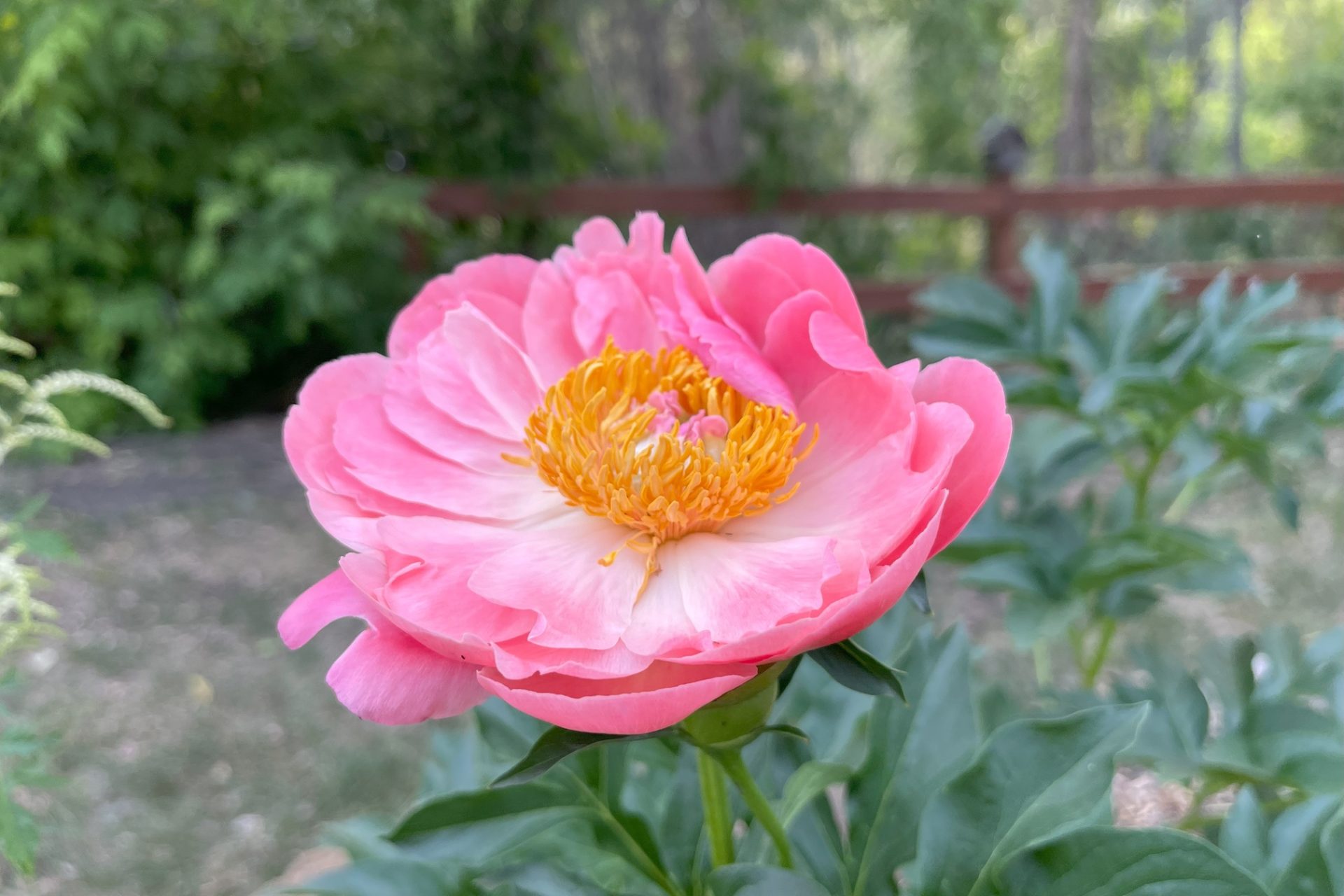When it comes to growing and caring for Peonies, there are often several questions that gardeners have. If you’re looking into growing peonies, you’re likely doing some research into how to plant them and ensure your peonies thrive!
This blog will address 10 of the most frequently asked questions about growing Peonies and provide quick, practical answers to help you cultivate the perfect Peonies in your garden.

Want the inside scoop on more gardening tips? Get early access to all my blogs and exclusive content by signing up for my newsletter!
1. When is the Best Time to Plant Peonies?

Peonies grow robust, tuberous roots and hate being disturbed, making them a bit tricky to transplant.
Peonies can be planted anytime during the growing season; however, they adapt best to a new location in the fall, ideally in September or early October, because it gives their roots a jump start to establish themselves before winter.
However, the conundrum with planting in the fall is that the most unique varieties are typically available in the spring.
If you have planted in the spring or summer, oversee the Peonies for the remainder of the growing season and keep the soil evenly moist—not too wet or dry.
You will likely see no further Peony growth during the summer if they have been planted early in the season, but keep with it. After a winter’s rest, they will emerge with more growth as the root develops.
Hydrate fall planted Peonies well and monitor them weekly to keep the soil evenly moist. The cooler weather and shorter days reduce a Peony’s need for water.
Related: How to Prepare a Great Planting Hole
Related: A Step by Step Guide to Successfully Moving Perennials
2. How Much Sunlight Do Peonies Require?

Peonies thrive in full sun, meaning they need at least six hours of direct sunlight daily.
Peonies will reduce flowering due to a lack of sunshine, so pick their spot carefully early on and remember to incorporate potential tree growth around the Peony plant over the years when making the decision about where to plant them in your gardening space.
Related: Eight Reasons Why Peonies Won’t Bloom
3. What Type of Soil do Peonies Prefer?

Peonies prefer well-draining soil that is fertile and rich in organic matter, but can survive in poor soil.
A pH level between 6.0 and 7.0 is ideal for their growth.

Want the inside scoop on more gardening tips? Get early access to all my blogs and exclusive content by signing up for my newsletter!
4. How Often Should Peonies be Watered?

Peonies grow best when their soil is kept evenly moist, so it is best to water them when they need it. Stick the full length of your index finger in the soil and if it is dry at the tip or first knuckle, it’s time to water.
Keep a close eye on newly planted Peonies and watch soil hydration during the next two growing seasons.
After their third year, Peonies should be well established and able to tolerate short dry spells.
That being said, if the dry spell extends into a summer drought, they will require some supplemental water and wilted Peony leaves are a sign of severe dehydration.
Use a 10-15 cm (4-6″) layer mulch over the soil and near the stems to help maintain soil hydration by reducing water evaporation. Mulch also insulates soil temperatures and suppresses weed growth.
Related: What is Mulch? Making Garden Magic with Mulch
5. How do I support Peonies with Large Blooms?

As Peonies produce large, showy blooms, it is essential to provide support to prevent the flower stems from drooping or breaking.
Specially designed Peony rings, stakes, or extra-large tomato cages can help keep the blooms upright and protect the branches from snapping in heavy rain or wind.
Guide the malleable and bendable Peony foliage through the rings as the plants grow in spring.
6. When Should I Fertilize Peonies?

Peonies can benefit from a light application of a balanced slow-release fertilizer (10-10-10) applied in early spring, just as the new spring growth emerges.
Avoid over-fertilization, as it can lead to weak stems and fewer blooms.
Related: How to Understand Fertilizer Labels
7. How do I Divide Peonies?

Peonies can be divided every three to five years to rejuvenate the plant and promote improved blooming.
The best time to divide Peonies is in early fall after the foliage has died back.
Carefully dig up the entire plant, carefully divide the roots into sections with at least three to five eyes (buds), and replant them in prepared soil.
Related: How to Divide Perennials Successfully
8. Why, Oh Why, The Ants??

The most annoying thing for some people is that Peony buds attract ants.
The reason for this is that Peony nectaries, where they produce and secrete sticky, sweet nectar are located outside the bud on their sepals, which are leaf-like structures that cover the bud before the flower opens.
This type of nectary is called an extra-floral nectary and provides a food source for ants.
Ants aren’t needed to open the bud, the flowers would open just fine without them.

Want the inside scoop on more gardening tips? Get early access to all my blogs and exclusive content by signing up for my newsletter!
8. What is the Best Way to Pick Peony Blossoms?

As with cutting any flowers from your garden, pick Peonies first thing in the morning when they are plump and fresh after a night’s rest.
Pick Peonies when they are in bud, when they feel soft like a marshmallow. (And it’s easy to flick off any ants at this stage, so there will be no hitchhiking into the house!)
Cut the stem at a 45° angle to maximize the available surface for water uptake and place in fresh clear water in a clean vase. (I love to use large mason jars.)
The Peony flower should unfold in about 3 days and last one week – 10 days, depending on the variety.
10. How Long to Peony Plants Live?

Peonies are robust, tough perennials that are hardy to plant growing zone 3, with some varieties lasting in zone 2, which can be attributed to their genetics and their tuberous roots.
Peony plants can last 70-100 years, especially when they are grown under the most favourable conditions, even with little care.
Frequently Asked Peony Questions
Growing peonies adds bright colour and beautiful texture to your garden. If you’re apprehensive about adding these gorgeous flowers to your garden, they are worth the work! I hope the answers to these frequently asked questions about Peonies provide a framework for your Peony gardening activities and a springboard for more detailed information. Check out my guides and if you have any questions not answered in these blog, you can always send me a question and I would love to help.
Check out these Peony blogs and the above links to dig deeper into your quest to grow resilient and rewarding plants that bring beauty and elegance to your garden:
©Sharon Wallish Murphy ©Gardening with Sharon































